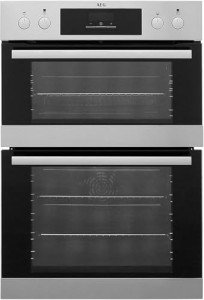20 Fun Facts About Inbuilt Oven
The Comprehensive Guide to Inbuilt Ovens: Elevating Your Culinary Experience
In the realm of modern-day cooking areas, the inbuilt oven stands apart as a quintessential home appliance that combines functionality with design. Unlike traditional freestanding ovens, inbuilt ovens are created to incorporate perfectly into cabinetry, using a sleek appearance while optimizing readily available space. As homes progress, the demand for efficient and aesthetically pleasing kitchen appliances has actually resulted in increasing appeal of inbuilt ovens, catering to the needs of both amateur cooks and cooking specialists alike.
What is an Inbuilt Oven?
An inbuilt oven, frequently referred to as a built-in or integrated oven, is an unit that is developed to be set up within kitchen cabinets. These ovens can be found in various shapes, sizes, and technologies, providing users a large range of choices when it comes to both cooking and kitchen style. They are normally built at eye level, making them quickly available without the requirement to bend down, which is a function appreciated by lots of home cooks.
Types of Inbuilt Ovens
Inbuilt ovens can be categorized in numerous ways based on their cooking technology and style. Here are the main types of inbuilt ovens offered in the market:
Conventional Ovens: These use convected heat from top and bottom aspects for traditional baking and roasting.
Convection Ovens: Equipped with a fan and exhaust system, stove circulate hot air for even cooking, minimizing cooking times and boosting flavors.
Steam Ovens: Using steam to prepare, these ovens keep nutrients and wetness in food, making them ideal for health-conscious people.
Mix Ovens: These flexible systems can function as both a conventional and microwave oven, offering flexibility for various cooking techniques.
Self-Cleaning Ovens: Featuring automated cleaning procedures, these ovens make maintenance simple and hassle-free, enabling users to concentrate on cooking.
Advantages of Inbuilt Ovens
Inbuilt ovens offer a myriad of benefits that make them an appealing option for modern kitchens. Some of the essential advantages include:
Space Efficiency: By fitting into cabinetry, inbuilt ovens save counter area and can enable more kitchen style alternatives.
Accessibility: Elevated styles suggest users can quickly access food without having to bend down.
Visual Appeal: These ovens are available in a range of finishes and styles, permitting house owners to develop a cohesive appearance in their kitchen.
Advanced Technology: Many inbuilt ovens come geared up with wise technology functions, such as app control and pre-programmed cooking settings.
Improved Cooking Performance: With alternatives like convection and steam cooking, inbuilt ovens frequently offer exceptional cooking results.
Feature
Conventional Oven
Stove
Steam Oven
Mix Oven
Cooking Method
Convected heat
Fan Assisted
Steam
Multi-Mode
Cooking Time
Basic
Reduced
Basic
Versatile
Upkeep
Moderate
Moderate
Low
Moderate
Nutrient Retention
Low
Moderate
High
High
Cost
Low to Moderate
Moderate
High
High
Factors to consider When Choosing an Inbuilt Oven
Picking the ideal inbuilt oven for your kitchen involves careful consideration. Here are some aspects to consider:
Size: Measure the space offered in your cabinetry to guarantee the oven fits perfectly.
Fuel Type: Decide in between electric and gas ovens based on your cooking choices and existing kitchen infrastructure.
Features: Assess which functions are vital for your cooking design, such as self-cleaning, wise functions, or specialized cooking modes.
Budget: Inbuilt ovens can differ significantly in cost. Determine your budget in advance to limit your alternatives.
Brand and Warranty: Research reliable brands and consider warranty choices as they can show the quality and sturdiness of the appliance.
Popular Brands of Inbuilt Ovens
Here's a fast overview of some widely known brands offering premium inbuilt ovens:
- Bosch: Renowned for sophisticated innovation and performance.
- Miele: Known for superior efficiency and elegant styles.
- Electrolux: Offers flexible cooking services with ingenious functions.
- Oven World: Specializes in inexpensive yet high-performance ovens.
- Smeg: Combines retro design with modern performance.
Regularly Asked Questions (FAQs)
Q1: Can I set up an inbuilt oven myself?A1: While it is possible for experienced DIYers to set up an inbuilt oven, it is typically advised to have an expert do it to ensure safety and correct performance. Q2: What are the benefits of a steam
oven?A2: Steam ovens are excellent for protecting wetness and nutrients in food, making them ideal for healthy cooking. They are ideal for baking bread, steaming veggies, and reheating food without drying it out. Q3: How often need to I clean my inbuilt oven? visit the website : It is suggested to clean your inbuilt oven occasionally, particularly if utilizing it regularly. Describe the maker's standards for specific cleaning frequencies and methods. Q4: Are inbuilt ovens energy-efficient? A4: Yes, many modern-day inbuilt ovens are created with energy performance in mind, making use of technologies such as insulation and efficient pre-programmed cooking programs. Q5: What is the average lifespan of an
inbuilt oven?A5: With correct care, an inbuilt oven can last in between 10 to 15 years, although upkeep and usage patterns can affect this lifespan. An inbuilt oven is more than just a cooking appliance; it is a versatile addition that improves the functionality and looks of any kitchen. With a broad selection of choices readily available, house owners have the chance to choose a model that suits their cooking design and design preferences. As cooking areas continue to be the heart of the home, purchasing an inbuilt oven may extremely well be one of the very best choices for cooking enthusiasts aiming to raise their cooking experience. Whether choosing innovative functions or embracing a timeless style, inbuilt ovens undoubtedly supply a pathway to culinary excellence. 